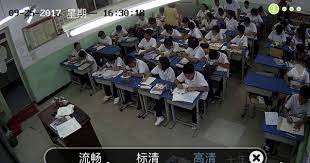Introduction:
It’s become more and more commonplace to see surveillance cameras in public spaces, but what happens when one is installed in your classroom, without consultation? While some argue that such cameras may improve safety and accountability, others worry about the impact on privacy and trust within the school community.
Reasons for installing a camera:
The principal may have installed a camera for various reasons. Here are some possible explanations:
1. Security: Ensuring the safety of students and staff is of utmost importance. The camera may act as a deterrent for inappropriate behavior or provide evidence should an incident occur.
2. Accountability: Cameras can offer a resource for evaluating teaching techniques, assessing classroom management skills, and addressing any concerns about teacher performance.
3. Monitoring during video calls: With the COVID-19 pandemic necessitating remote learning in many cases, cameras can allow principals to monitor the classroom during live video calls or playbacks.
Concerns regarding privacy:
Despite potential benefits, installing cameras in classrooms raises concerns about privacy rights for both students and teachers.
1. Invasion of privacy: The constant monitoring of teachers’ methods and students’ responses can feel invasive, leading to increased stress and discomfort in the learning environment.
2. Erosion of trust: Constant surveillance can undermine trust between educators and their administrators by suggesting that they’re not trusted to do their jobs without constant oversight.
3. Misinterpretation of footage: Without context, footage can be misinterpreted or manipulated, resulting in unfair judgments on teachers’ abilities or students’ behavior.
Legal implications:
As an educator encountering this issue, it’s essential to understand your rights and any potential legal implications surrounding surveillance cameras in the classroom.
1. Research local regulations regarding surveillance in schools to determine if such recording is legally permitted.
2. Consult with your union representative or legal advisor if you believe your rights have been breached.
3. Develop thorough policies regarding the use of surveillance within your school that outline your rights, expectations for use, and governance of collected footage.
Steps to address the situation:
If you’re uncomfortable with a camera in your classroom, consider taking these steps to address the issue:
1. Communicate your concerns: Discuss your concerns with the principal calmly, and understand their reasons for installing the camera. Offer alternative solutions for addressing any security or accountability issues.
2. Involve colleagues: Engage colleagues in discussions and gather their thoughts on the matter. A united front might cause administration to reconsider.
3. Seek parent support: Many parents may also have concerns about surveillance cameras in classrooms; garner their support to add weight to your argument.
Conclusion:
While surveillance cameras can serve vital security and accountability purposes, they must be implemented through careful consideration of privacy rights and without eroding trust within the school community. Adequate communication and understanding between administrators, teachers, parents, and students are necessary to establish a supportive learning environment that values safety without compromising trust.





